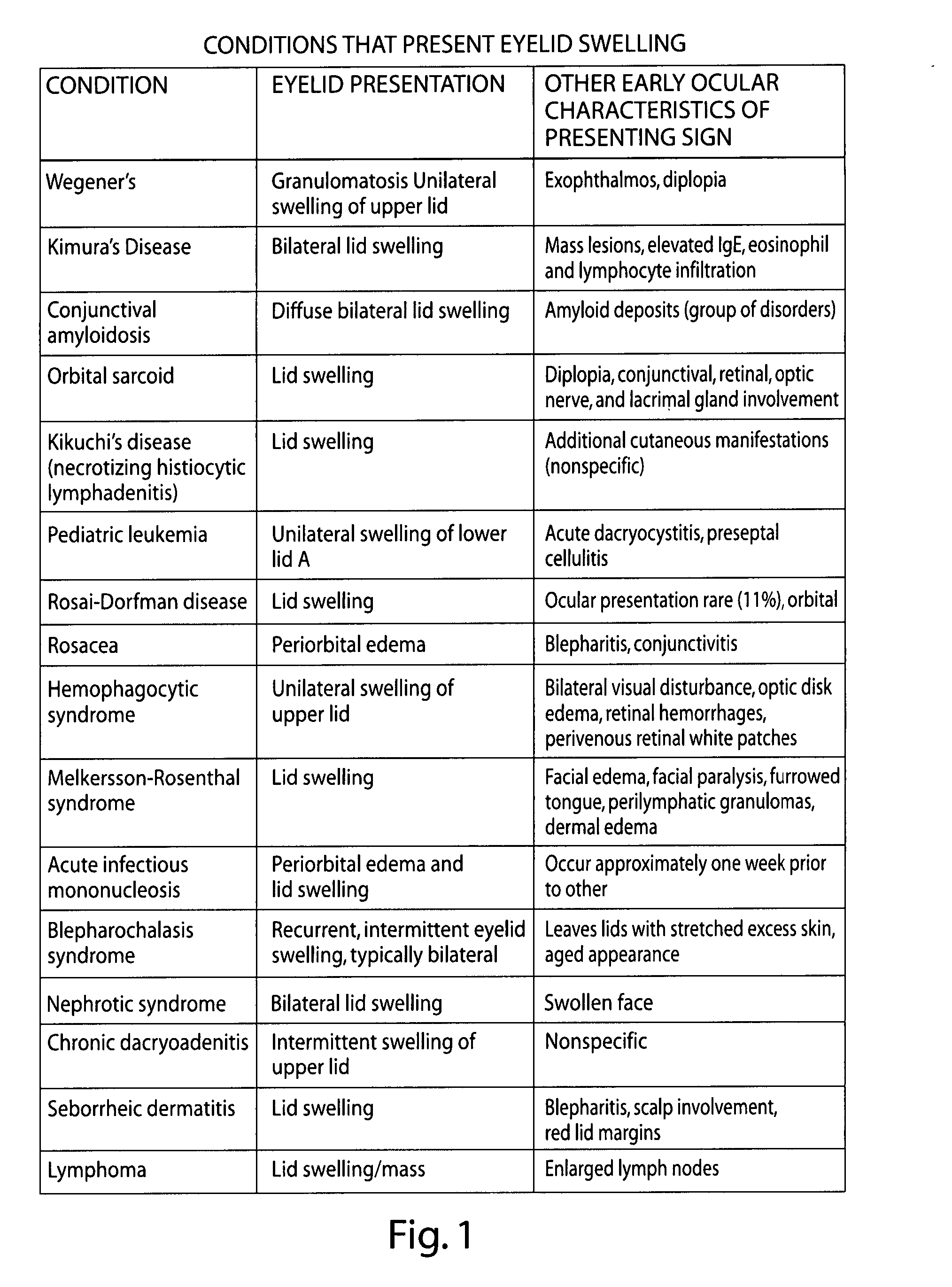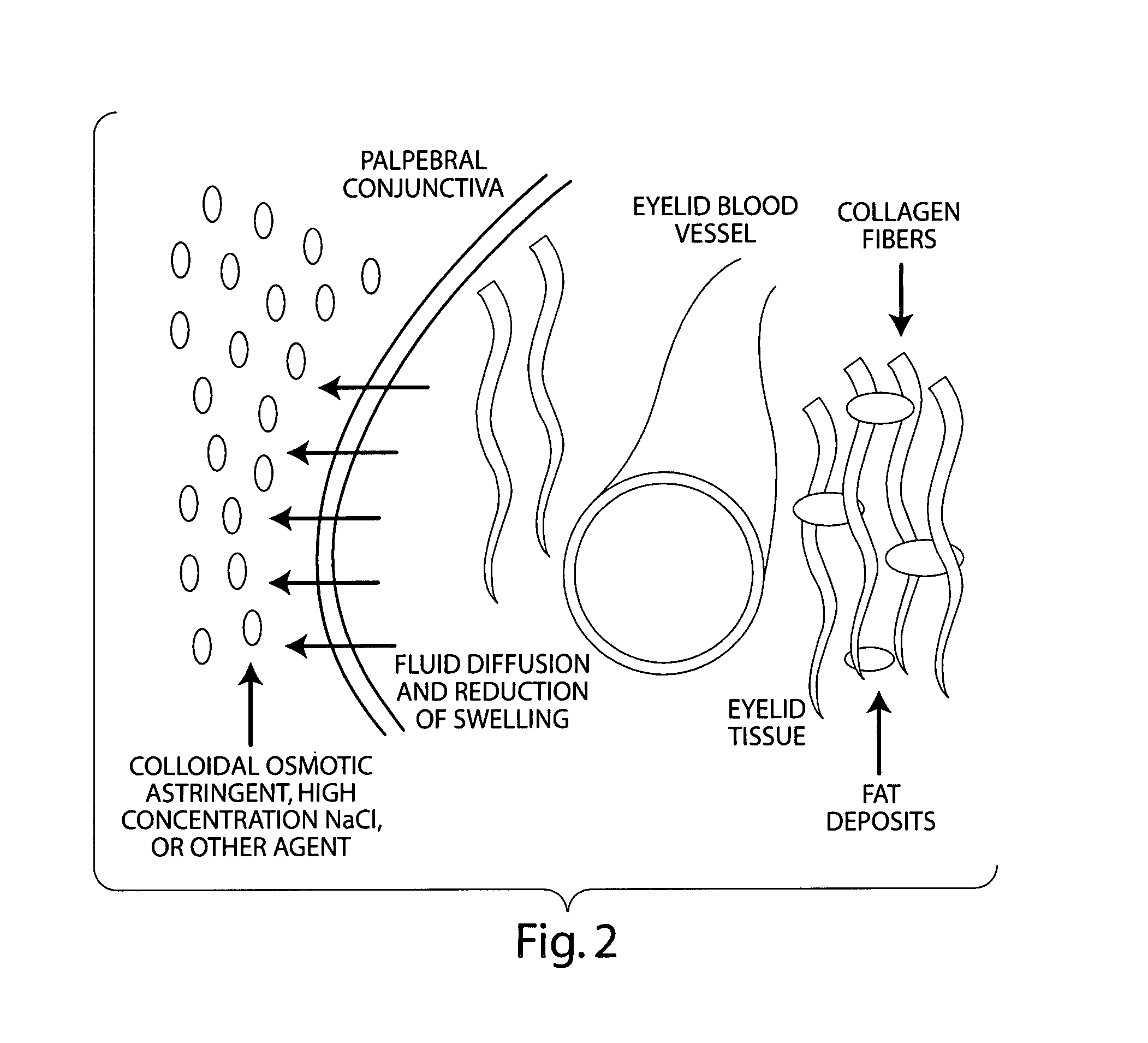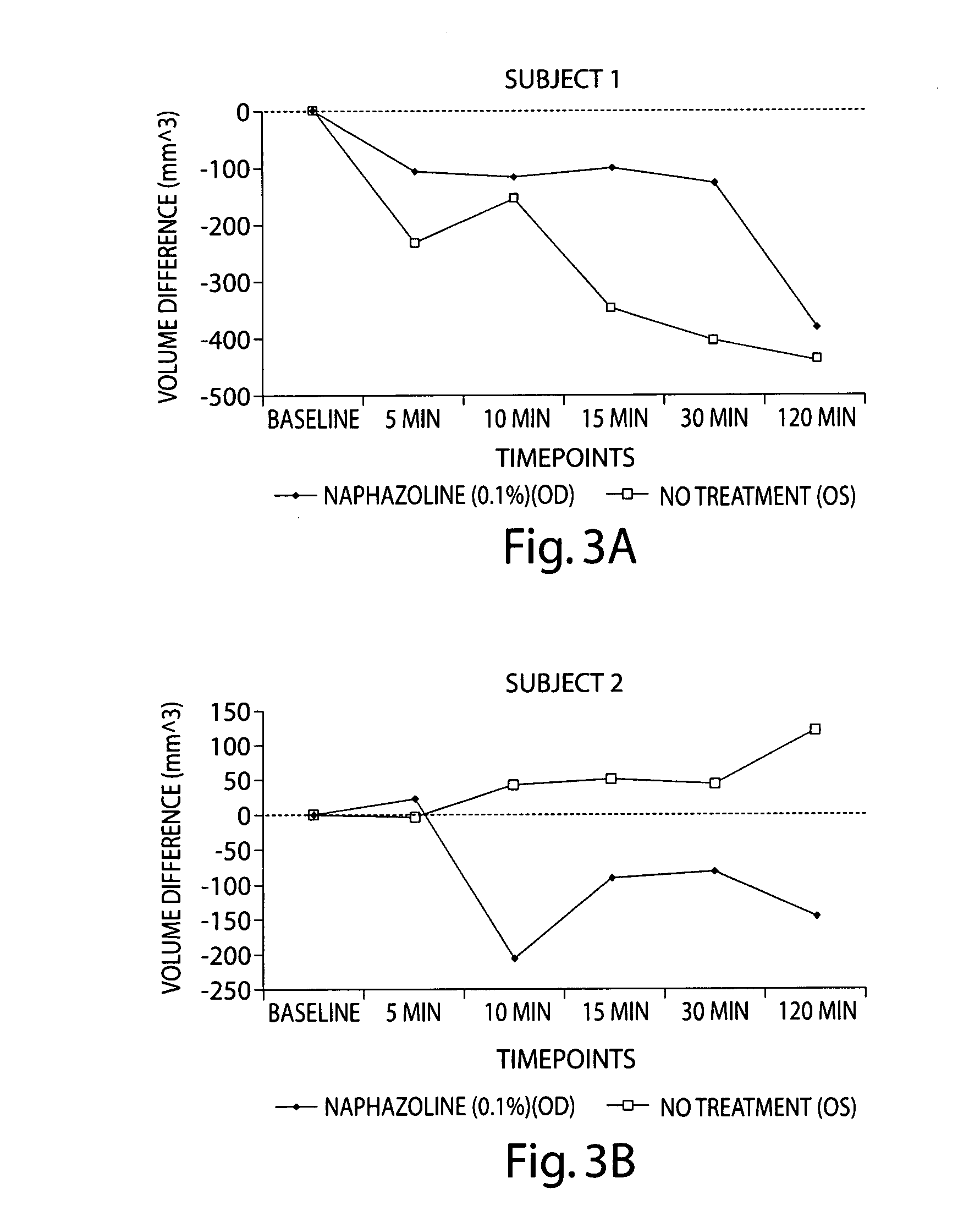Compositions for the treatment and prevention of eyelid swelling
a technology of compositions and eyelids, applied in the field of eyelid swelling prevention, can solve the problems of eyelid swelling, eyelid swelling is very susceptible to swelling, acute inflammation, and possible long-term damage, and achieve the effect of preventing eyelid swelling and preventing eyelid swelling
- Summary
- Abstract
- Description
- Claims
- Application Information
AI Technical Summary
Benefits of technology
Problems solved by technology
Method used
Image
Examples
example 1
Use of Naphazoline 0.1% Ophthalmic Solution as a Treatment for Morning Eyelid Edema
[0130] In this study, the efficacy of naphazoline 0.1% ophthalmic solution was evaluated for treatment for eyelid edema. The eyelid volume for 11 subjects participating in the study was recorded in the afternoon of Day 1 and again upon arrival to the clinic the following morning (Day 2). All subjects showed an increase in eyelid swelling at the morning scan during Visit 2. The natural progression of morning eyelid swelling, as measured using 3D scanning technology is depicted in FIG. 10. The increase ranged from 14 mm3 to 659 mm3. Subjects were then dosed with naphazoline 0.1% (vasoconstrictor) in the right eye and eyelid volume was assessed at 5, 10, 15, 30, and 120 minutes following treatment using a 3-D scanner. As shown in FIG. 3, two drops of naphazoline 0.5% solution caused a reduction of eyelid swelling in most subjects. 9 out of 11 subjects showed greater decrease in volume in the treatment e...
example 2
Use of a Colloidal Osmotic Agent, NaCl 5% Ophthalmic Solution, for Treatment of Morning Eyelid Edema
[0132] In a preliminary study with a similar design to that described above, NaCl 5% ophthalmic solution was evaluated as a potential treatment for eyelid edema. Two drops of medication were applied topically and caused a reduction of eyelid swelling in several patients (FIG. 4). Eyelid swelling was assessed using a 3-D scanner at 5, 10, 15, 20, 30, and 120 minutes post-treatment. Three patients demonstrated a reduction in eyelid swelling through 15 minutes post-instillation. In one subject, this reduction was pronounced and was present through the 120 minute assessment time point. In the remaining three patients, treatment was not effective.
[0133] Overall, these results demonstrated some efficacy of the NaCl 5% for ability to reduce eyelid swelling in certain patients. An assessment of mean change from baseline (FIG. 4G) suggests that NaCl treatments were numerically superior to ne...
example 3
Use of Naphazoline 0.05% / 5% NaCl Ointment for Treatment of Morning Eyelid Edema
[0135] The efficacy of Naphazoline hydrochloride (0.05%) dissolved in 5% NaCl ophthalmic ointment in preventing morning eyelid swelling was evaluated in four (4) patients. Three dimensional scans were taken of each patient and each eye during the afternoon between 4:30 to 5:30 pm. Each patient was asked to take home a vial containing 5% NaCl ophthalmic ointment containing naphazoline hydrochloride (0.05%) and apply the ointment into the conjunctival sac of the right eye immediately prior to sleep. The following morning, between 7:30 to 8:00 am, patients were scanned again for each eye. The mean volumes of the upper and lower eyelid regions were calculated for both afternoon and morning scans of each patient. The differences between the means were also calculated. Results showed that the treatment eye had approximately half the swelling of the untreated eye (FIG. 7).
[0136] The final formulation used in t...
PUM
| Property | Measurement | Unit |
|---|---|---|
| pH | aaaaa | aaaaa |
| viscosity | aaaaa | aaaaa |
| osmolality | aaaaa | aaaaa |
Abstract
Description
Claims
Application Information
 Login to View More
Login to View More - R&D
- Intellectual Property
- Life Sciences
- Materials
- Tech Scout
- Unparalleled Data Quality
- Higher Quality Content
- 60% Fewer Hallucinations
Browse by: Latest US Patents, China's latest patents, Technical Efficacy Thesaurus, Application Domain, Technology Topic, Popular Technical Reports.
© 2025 PatSnap. All rights reserved.Legal|Privacy policy|Modern Slavery Act Transparency Statement|Sitemap|About US| Contact US: help@patsnap.com



